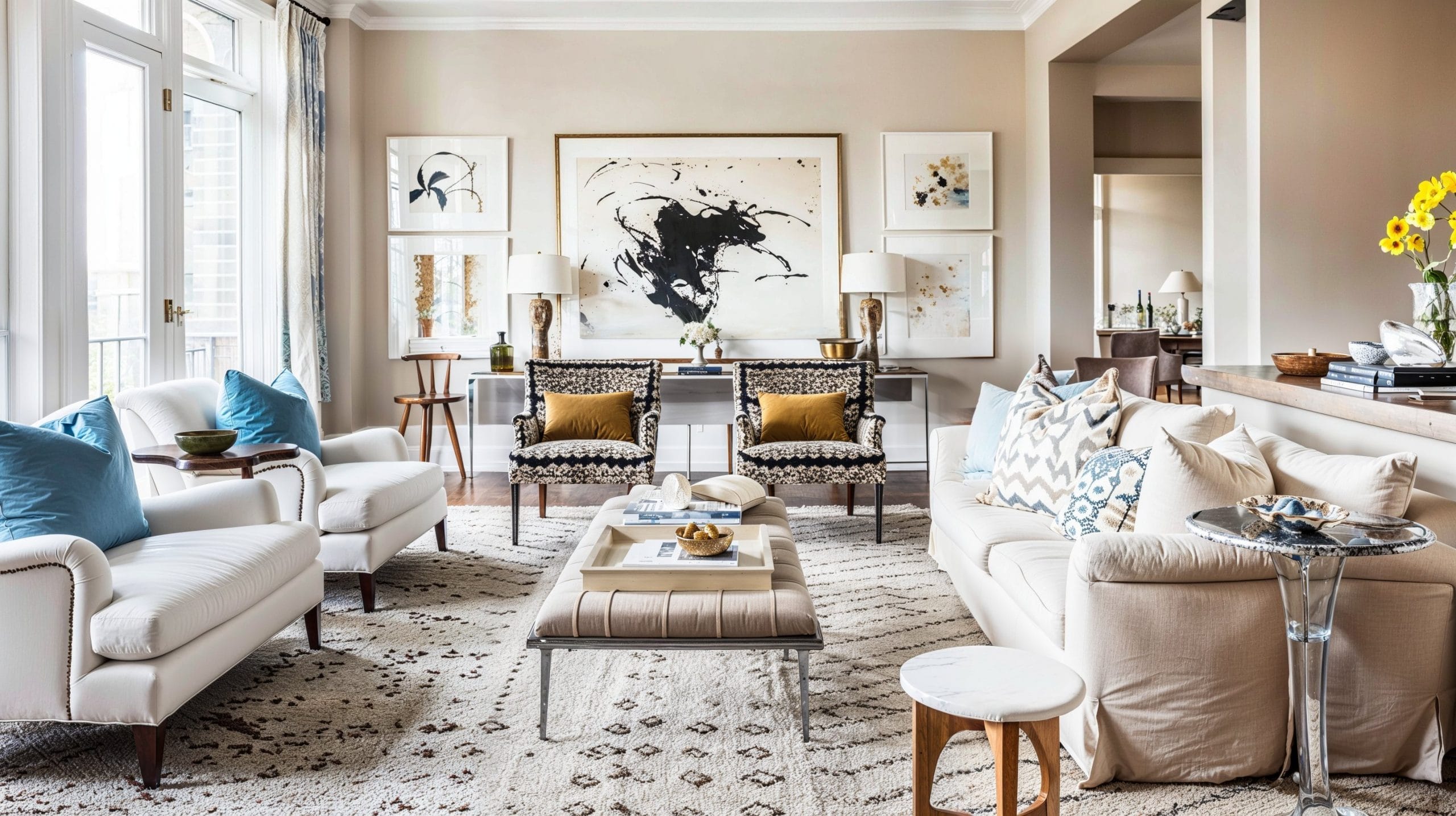Explore luxury interior design for an elegant touch.
Explore luxury interior design for an elegant touch.
Blog Article
Change Your Home With Essential Concepts of Interior Design and Visual Appeals
By comprehending the influence of color theory and the importance of appearance and patterns, one can create areas that are not just aesthetically enticing however additionally deeply personal. Accomplishing this stability involves more than simple decor; it encompasses a calculated setup and a keen understanding of just how each element communicates within an area.
Recognizing Shade Theory
Shade concept is a fundamental aspect of interior decoration that substantially influences mood, understanding, and general visual. Understanding the principles of color theory allows developers to develop rooms that reverberate psychologically with occupants while fulfilling practical demands (interior design firms). Colors can be categorized into 3 primary types: main, additional, and tertiary. Each classification plays an essential function in establishing harmony within a space.
The psychological impact of colors is extensive; cozy shades such as reds and oranges evoke power and warmth, while cool tones like blues and environment-friendlies promote calmness and peace. The usage of complementary colors boosts visual passion, producing striking contrasts that can elevate an area's allure.
Neutral shades, on the other hand, offer as a flexible backdrop, permitting other layout elements to beam. It is important to think about elements such as lights and the room's function when selecting a color palette, as these can change the perception of colors throughout the day.
Inevitably, a well-considered color plan can transform an area, cultivating a sense of comfort and design that lines up with the residents' choices. Mastery of color concept is, for that reason, a vital skill for any type of indoor designer aiming to produce unified and welcoming environments.
Accomplishing Equilibrium in Layout
Just how can designers achieve a sense of equilibrium in their spaces? Achieving balance in layout is fundamental to creating harmonious insides.
Unbalanced equilibrium, on the various other hand, relies upon differing elements that still achieve a cohesive look. This method permits even more vibrant and informal plans, supplying rate of interest while preserving equilibrium. By thoroughly selecting differing dimensions, shades, and textures, designers can create an aesthetically engaging area that feels well balanced yet energetic.
Radial equilibrium emphasizes a central focal factor with aspects radiating outward. This design is generally seen in circular formats, where furnishings and design produce a natural surround that draws the eye internal.
Ultimately, achieving balance requires thoughtful consideration of range, proportion, and the partnerships between elements. miami luxury interior design. By masterfully using these equilibrium concepts, designers can change rooms into settings that really feel both aesthetically pleasing and functionally harmonious, boosting the overall experience for owners
Significance of Spatial Recognition

An eager feeling of spatial awareness enables designers to determine centerpieces within an area, assisting the audience's interest to crucial functions while preserving a general sense of unity. It also aids in the calculated placement of illumination, which can significantly influence the assumption of space and mood. Understanding spatial relationships enables the developer to provide to the particular needs of residents, making sure that each area offers its desired function without compromising visual appeals.
Eventually, spatial awareness is important for taking full advantage of the possibility of any type of interior area. By carefully taking into consideration the interaction between measurements, format, and feature, designers can create settings that not only fulfill sensible demands but additionally you could try this out evoke a feeling of comfort and beauty, enhancing the general living experience.
Incorporating Structure and Patterns
Embracing a varied range of structures and patterns can considerably boost official statement the visual and responsive charm of an indoor space. The tactical use various materials-- such as timber, metal, fabric, and stone-- produces deepness and interest, making a space feel extra welcoming and dynamic. As an example, incorporating smooth surfaces with rough appearances can establish a balance that draws the eye and engages the detects.
When including patterns, think about both scale and repeating. Huge patterns can act as prime focus, while smaller sized, refined layouts can enhance various other aspects without overwhelming the room. Layering patterns, such as pairing flower cushions with striped throws, includes complexity and a sense of harmony if implemented attentively.
It is additionally critical to keep a cohesive color scheme, ensuring that textures and patterns collaborate instead of complete for interest. By selecting a couple of crucial structures and patterns, you can create a merged aesthetic that mirrors your personal design while boosting the total atmosphere of the room. Inevitably, the cautious consolidation of these elements can change a mundane area into an innovative environment abundant with character and heat.
Personalizing Your Room
Creating an area that reflects your individuality is important to attaining a really welcoming environment. Personalization in interior style permits you to infuse your special design and interests right into your home, transforming it from a simple sanctuary into a shelter that talks with that you are. Begin by choosing a shade scheme that resonates with your emotions-- strong tones can energize, while soft tones use tranquility.
Integrate artwork and decoration that show your enthusiasms, whether Home Page it be travel, nature, or abstract ideas. Displaying personal collections, such as books, pictures, or mementos, can evoke valued memories and develop prime focus within an area. Additionally, think about personalizing useful items, like upholstered furnishings, to align with your aesthetic preferences.

Verdict
In final thought, the improvement of a home through the important concepts of interior decoration and aesthetic appeal necessitates a thorough understanding of shade theory, equilibrium, spatial understanding, texture, and customization. Each component adds considerably to creating a harmonious and functional living atmosphere - interior design firms. By attentively integrating these concepts, individuals can improve the aesthetic appeal and psychological resonance of their areas, ultimately promoting a home that mirrors distinct identifications while providing convenience and usefulness
Report this page